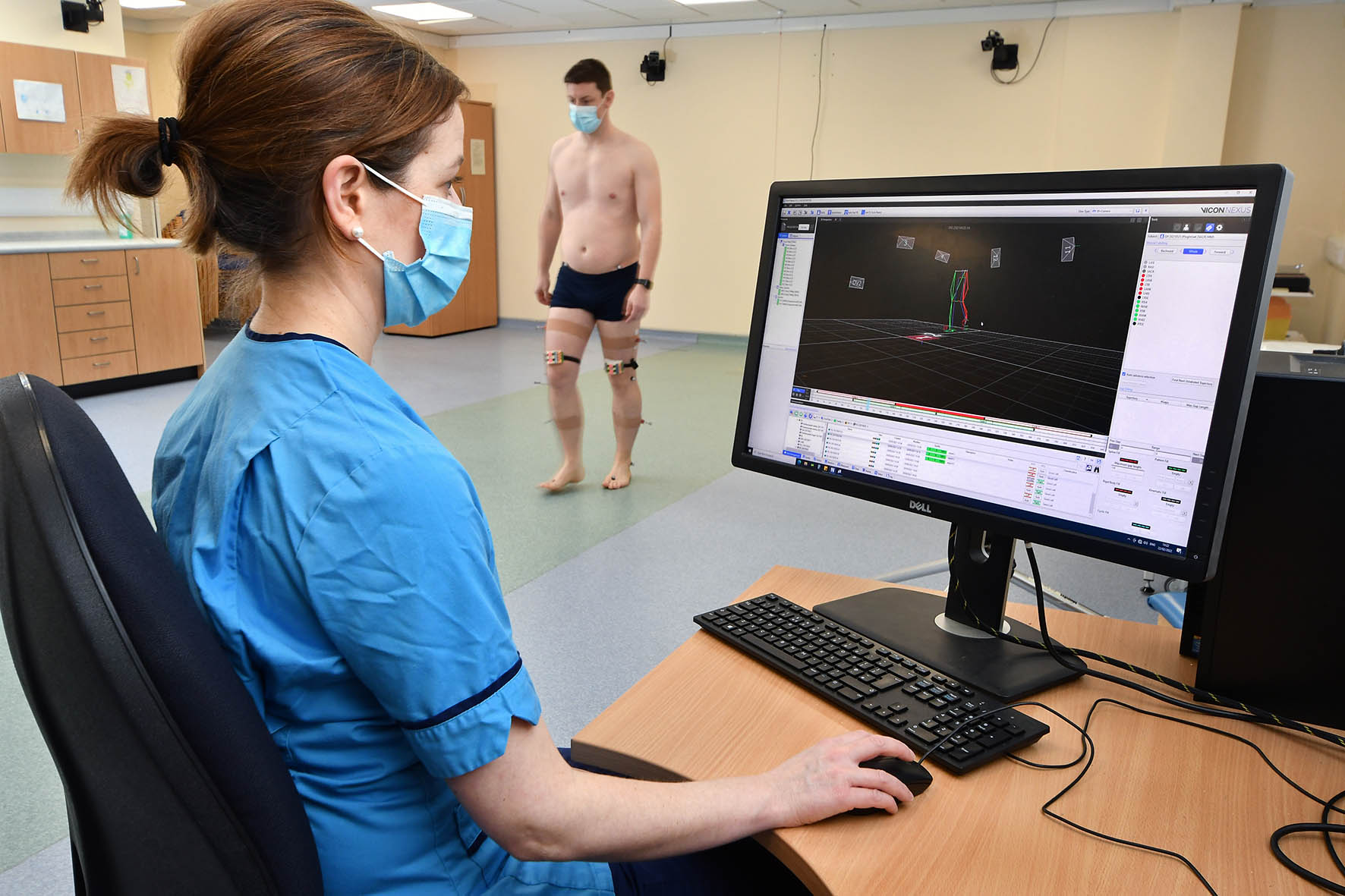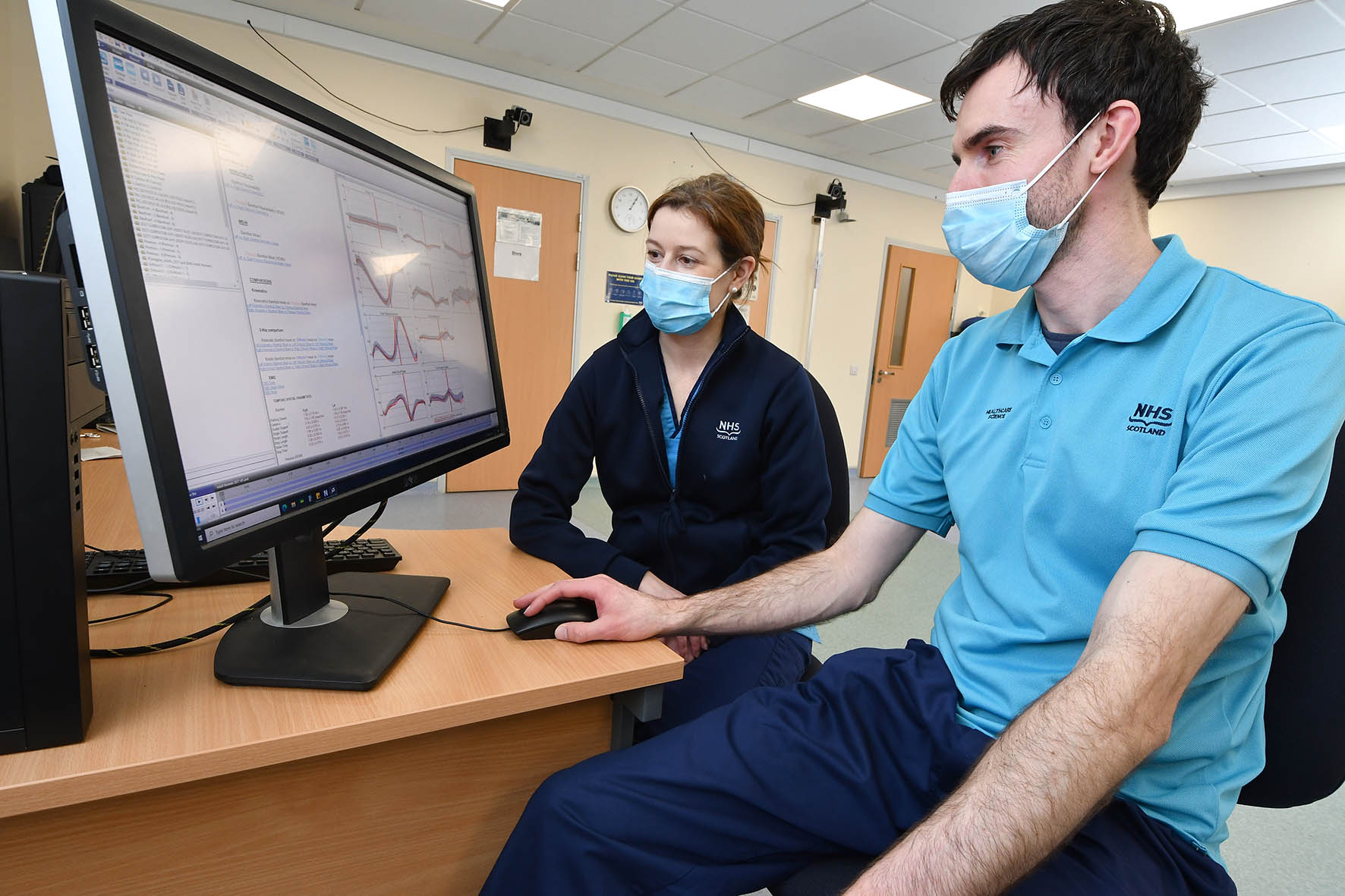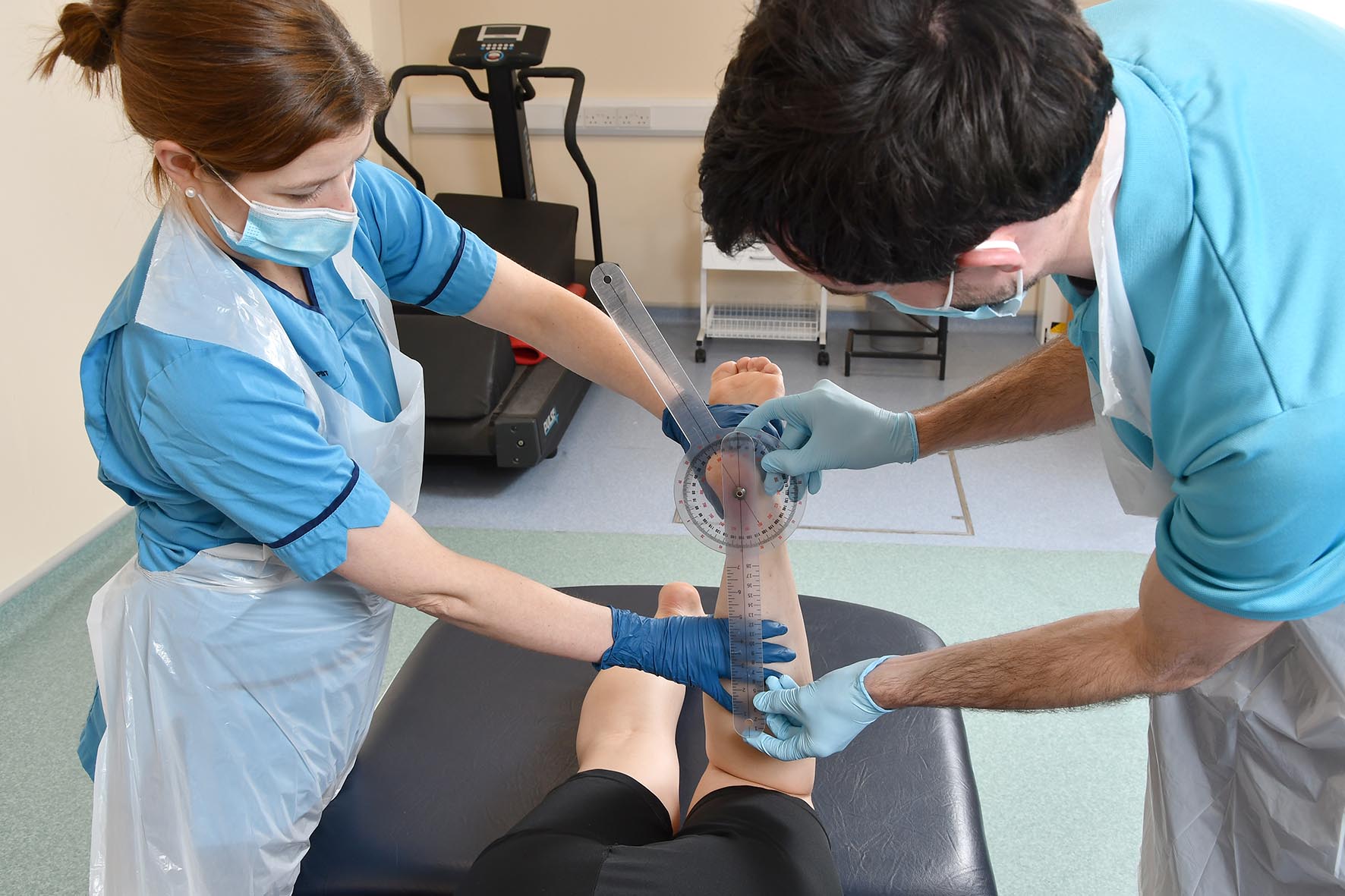Gait Lab
Gait analysis is used to study the complex walking problems of children (from age 3), young people and adults with complicated neuromuscular and orthopaedic problems such as cerebral palsy, spina bifida, traumatic brain injuries, congenital neuromuscular conditions and foot deformities.

What We Do
A digital video system is used to retain a permanent visual record of the patient’s gait pattern. This equipment allows slow-motion viewing of the patient from front and side. The Vicon 3-dimensional movement analysis system uses twelve cameras to follow the precise position of markers attached to the patient. At the same time, the forces transmitted from the foot to the floor are measured by force plates. These data are combined to calculate the various loads acting on the joints and muscles and their corresponding movements. The computer, using advanced software, constructs a model of the patient’s musculo-skeletal system. The gait analysis team will then analyse the model and make recommendations about the appropriate therapy, surgery or other methods of treatment.
Types of data that are collected
- sagittal and coronal plane video recording
- kinetic and kinematic graphs
- electromyography graphs
- a detailed physical examination of the lower limbs including ranges of motion, muscle strength, bony torsions, posture and balance etc
Reporting process:
- data interpretation and biomechanical analysis
- summary of gait problems
- treatment recommendations
After your appointment the Gait Analysis Laboratory team meet to talk about the report and decide on the best kind of treatment for you. This could include one or more possible options such as therapy, splints, botulinum toxin, surgery or medication.
At your next appointment your doctor or other Allied health professional involved in your care will discuss the plans with you and your family.
More Information
How it works
Accurate assessment by gait analysis may improve the quality of life for patients, reduce multiple hospital admissions and may keep treatment costs down.
Measuring and analysing a person’s walking using specialist high tech equipment (eg 3D motion capture) provides accurate and detailed information on the movements (kinematics) of the whole body but particularly of the pelvis and legs when walking. It can also provide information on the forces acting on the lower body and its joints (kinetics and ground reaction forces), the actions of the muscles (Electromyography) and information about walking speed, step lengths etc (tempero-spatial parameters).
This data along with the results of a detailed physical examination is analysed to explain a person’s walking or mobility problems and to assist our multidisciplinary team in making treatment recommendations to clinicians in order to improve an individual’s walking ability or to evaluate the outcome of any interventions.
A gait analysis report is produced and shared with all the clinicians involved in the management of a patients walking.
Walking is a complex activity involving co-ordination of the muscles, bones and joints of the lower limbs. The benefits of gait analysis is that it provides detailed and accurate information on this and reveals defects as well as coping strategies which are difficult to spot from only carrying out a physical examination and observing a person walking.
Analysis of the gait data collected means that we can get a really good understanding of why a person walks they way they do , to determine the primary problems affecting a person’s walking from the secondary compensations and to also explain the reasons for any pain, fatigue etc. This is invaluable in the treatment of patients with complicated neuromuscular problems such as cerebral palsy, muscular dystrophy, myelomeningocele, arthritis or traumatic brain injuries. It is used to recommend appropriate Orthopaedic surgery, Neurological interventions eg drug prescriptions, botox injections and can also be used to optimise the selection and alignment of the most appropriate orthosis ,prosthesis or therapy programme to maximise or improve a person’s walking ability and to evaluate the outcome of any of these interventions.
How to Refer
Referrals are accepted from any healthcare professional (e.g. GPs, Hospital Consultants, AHPs). For patient referral or further information, please contact:
The Anderson Gait Laboratory
SMART Centre
Astley Ainslie Hospital
133 Grange Loan
Edinburgh
EH9 2HL
Tel: 0131 537 9177 (select option 8)
Referrals to the service have five main stages
- Referral management
- Gait Assessment appointment
- Data analysis and report production
- Multidisciplinary discussion
- Report completion and circulation
For referral criteria please download the referral form above.
NB. The person referred to the Gait lab must be able to walk at least 10 metres.


